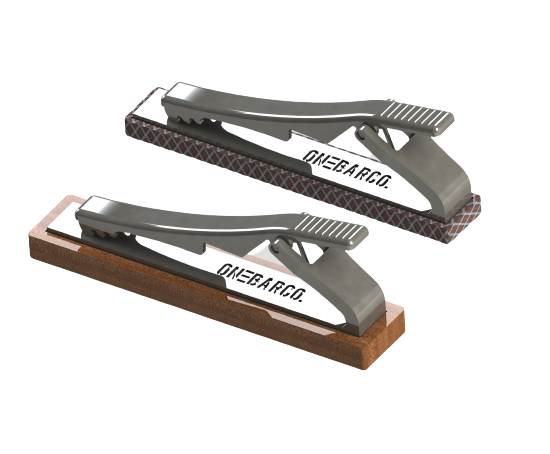Industrial product design is the process of creating and developing products used in industrial settings or by consumers. It involves combining aesthetics, functionality, ergonomics, and manufacturability to create products that meet the needs of users while also being economically feasible to produce.
Example: For example, Michael, from Onebarco was struggling to get various tiebars for his every dress matching style, fabric and color etc, he thought about using just one bar with various cover or the visible area to be replaceable and that was the turning point for an idea generation. Rest is the history.


Steps involved in industrial product design:
- Idea Generation and Screening: This involves understanding the needs of the target market, researching competitors, and analyzing trends in the industry. Market research helps designers identify opportunities and challenges.
- Concept Development: Designers generate ideas and concepts based on the research findings. This stage often involves brainstorming, sketching, and creating prototypes to explore different design possibilities.
- Prototyping and Testing: Prototypes are created to test the feasibility and functionality of the design. Prototyping allows designers to identify and address any issues or flaws before moving forward with production.
- Design Refinement: Based on feedback from testing, designers refine the design to improve its functionality, aesthetics, and usability. This iterative process may involve multiple rounds of prototyping and testing.
- Manufacturing Considerations: Designers work closely with engineers and manufacturers to ensure that the product can be produced efficiently and cost-effectively. They consider factors such as materials, production processes, and assembly methods during the design phase.
- Finalization and Production: Once the design has been refined and approved, it is finalized for production. Detailed specifications and documentation are prepared for manufacturers to follow during the production process.
- Quality Assurance: Throughout the production process, quality assurance measures are implemented to ensure that the final product meets the required standards and specifications.
- Packaging and Branding: Designers may also be involved in creating packaging and branding materials for the product, which contribute to its overall appeal and marketability.
- Launch and Marketing: Finally, the product is launched into the market, and marketing efforts are undertaken to promote it to potential customers. Designers may be involved in developing marketing materials and strategies to support the launch.
Overall, industrial product design is a multifaceted process that requires creativity, technical expertise, and a deep understanding of user needs and market dynamics. Successful product design not only results in aesthetically pleasing products but also enhances user experience and drives business success.
